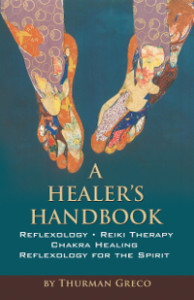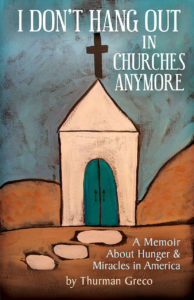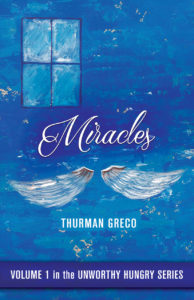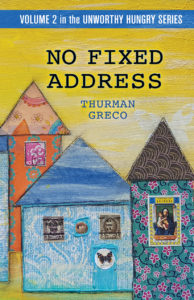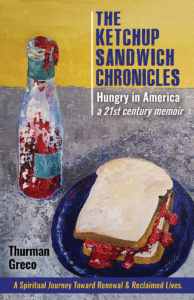Woodstock Commons Then and Now
An institution in Woodstock, the Sunflower Natural Foods Market, sits on the main street in of a piece of property once called Bradley Meadows. Bradley Meadows was a privately owned property allowed for many years by the owners to be natural. Townspeople loved it that way. Wild forest creatures inhabited the place: squirrels, chipmunks, rabbits, migratory birds, wood frogs, spring peepers, newts, American toads, spotted salamanders, and the endangered Indiana Bat. There are even a few stories about a black bear.
Homeless people inhabited Bradley Meadows then also. Quietly, as far under the radar screen as possible, people lived. They pitched tents, or lived under the trees in the woods behind the Sunflower.
These homeless visited the pantry weekly. Between pantry days, it’s said, they dumpster dived for what food they could get.
Several years ago, steps were taken to turn the Bradley Meadows property into an affordable housing site. The Rural Ulster Preservation Company came to town. What a group! No matter what objection anyone raised about the housing project, the RUPCO team overcame it. The Woodstock Commons plan created much dialogue and discussion among some residents.
Some Woodstock residents fight change as aggressively as if their livelyhood depended on it. Historical events include the Woodstock Post Office, and the Cumberland Farms gas station among others. After much noisy back and forth the project eventually gets finished and we all forget there was ever conflict or that anyone even cared. But, it certainly beats boredom.
“They’re going to ruin the traffic in the area.”
“Using all the water is going to be too expensive for our town.”
“That’s a flood plain over there. Nothing should be built.”
“What about the wildlife?”
“Nobody local is going to get to move in. This is going to ruin the town.”
The dialogue could have been summed up as somewhere between “Over my dead body” and “When hell freezes over.”
After much haggling, horse trading, and politicking, the buildings went up on one third of the forested plot. Eighteen acres, designated a Forever Wild Conservation Easement, have nature and interpretive trails. One trail goes to the shopping center where the Sunflower, Rite Aid, and Bank of America are located which minimizes automobile traffic.
These trails have fitness exercise stations. One, an Energi Total Body Fitness System is good for overall fitness. The other station, a Lifetrail Wellness System Exercise Station focuses on fitness for those over 50 years of age.
The construction code is “Green”. Eleven buildings were beautifully laid out on the land, arranged in a circle so residents can connect with one another.
Woodstock Commons is an intergenerational development with two buildings for seniors/handicapped residents. Twelve units are reserved for artists. All buildings are non-smoking. (There is a specified smoking area in the gazebo.) In short, Woodstock Commons is an example of the country’s affordable housing movement. Woodstock Commons is eligible for gold level certification in the US Green Building Council Program.
People filled out applications and turned them in at the Ulster Savings Bank, and the RUPCO office in Kingston. And, finally, in late 2012, the first residents moved in. As each unit became complete, a family moved in. New residents moved in by ones and twos every few days or so until all fifty-three units were filled.
At first, the residents felt as if they were experiencing culture shock. Everyone and everything was new to the space. People moved from Woodstock, Rosendale, Kingston, Saugerties as well as other places. It took awhile to anchor and define the energy of the new community.
A true diverse community, people came from different educational, class, ethnic backgrounds. What they had in common was a desire to meet basic needs. Maslow’s Hierarchy comes to mind here. In many instances, RUPCO was a lifeboat for people who had lost their homes to foreclosure, weather events, etc.
RUPCO is a landlord and sooo much more. The goal is to create lively and active community for the residents.
The hub of the whole community is the Superintendent. Ken has the personality and drive to make the Commons as positive an experience as possible for the residents. He’s well liked by everyone and the grounds and buildings are well maintained. He has his hand in many Commons events. Projects include:
Organic vegetable garden on common property
Local barbecue events for residents
Nature classes with scavenger hunts on the grounds
Art shows
Birthday parties
Dance classes
Crochet classes
Sunday Morning Story Hour
Drumming circles
Holiday dinners for the residents
A real community has emerged as residents get to know one another. Babies have been born. Conversations are taking place over the garden plots, Saturday movies, community meals, and food pantry deliveries.
Even with all of these activities there’s a hunger for more. People are looking for a story teller to visit regularly.
So…we’ve come full circle. It’s rumored that one of the homeless who lived in Bradley Meadows now has a home at Woodstock Commons.
And, what about the wildlife? Some of it is no doubt gone. But, some of it has stayed on to become part of the Woodstock Commons community. New wildlife has arrived. Every time I drive on the grounds I see animals.
The place is beautiful. It makes me wonder what the fuss was all about in the beginning.
What a gift to our community!
Thanks for reading this blog/book.
please share this article with your preferred social network.
Send a comment.
Peace and food for all.
Thurman Greco
Food Pantry Blog – Part 1 of 4 – Wednesdays in the Pantry
Many of the people who come to our pantry receive a moment: a smile, a touch, a recognition that they are important. Our shoppers are positive in the pantry because we offer them love, positive attitude, respect.” – Mary R. Rainey
The pantry line formed on Wednesdays at the side entrance of the Woodstock Reformed Church, beginning a couple of hours before the Good Neighbor Food Pantry opened. We were allowed to enter the building on Wednesdays for food distribution between 3:00 and 7:00 pm. Prasida Kaye, Rich Allen, and I gathered in the rear of the parking lot about 2:30. We couldn’t get into the building but we could open the barn where the frozen food was stored in donated freezers and refrigerators.
As we opened the barn, I signaled to the shoppers to “come on down” and select an item of frozen or refrigerated food. Depending on what we had available, every household chose from a package of frozen meat, an occasional pound of butter, a package of Bella Pasta donated by Maria’s, or a package of frozen macaroni and cheese (from Land O Lakes). Bob Otto and Tony Cannistra stood at the entrance to the barn and offered selections to each shopper coming by.
Barn duty was, in my opinion, feeding the hungry under the worst conditions. Bob and Tony took standing in front of the barn distributing the frozen food to people in all kinds of weather because the pantry always opened…no matter what. In the cold, they would trade off so they could come in the pantry occasionally and get warm – imagine that: getting warm in a building that was warmed only with body heat.
Thanks for reading this blog/book. Tomorrow’s post will focus on the people who came each week to shop.
Please share this article on your preferred social network.
Peace and food for all.
Thurman Greco
Leaving the Past Behind – Karen
Sometimes, leaving the past behind meant leaving the pantry. Karen was a regular volunteer in the pantry.
“Hi. Welcome to the pantry. How’re you doing today? Can you please sign your name here?”
She was always punctual, She was courteous, professional, friendly.
“The line is going fast this afternoon. Also, we’ve got a lot of green beans and organic spinach salad.”
She remembered peoples’ names. In short, Karen was pretty close to being a perfect volunteer. She was a strong supporter of the pantry.
Then, in the fall, I taught a series of Reiki therapy classes to the pantry volunteers. I tried to do this yearly because I felt the Reiki therapy helped the pantry, the volunteers, and me. Besides, I loved teaching Reiki therapy and I loved being with the volunteers as they learned it.
I knew 15 minutes after the Reiki 1 class started that things were going to be dramatically different for her forever.
Everyone who takes a Reiki therapy class experiences a life change. For most Reiki practitioners the change is slow, subtle, gentle. Some aren’t even aware of what’s happening. Karen took the Reiki 1 class. She took the Reiki 2 class. She took the Reiki 3 class. Several months went by and she took one of my advanced classes. Well, Karen could have taught that class hands down. Every subject that I brought up was one that she had experienced.
One afternoon Karen came to say good-bye to the pantry. Her life had been changed by both the pantry and the Reiki therapy. What more could we ask for?
We still occasionally see her. She drops by to volunteer in the pantry when she has a lull in her Reiki therapy sessions with clients.
Thank you Karen for all you give to those around you.
Peace and food for all.
Thank you for reading this blog/book.
Please share this post with your preferred social network.
Thurman Greco
Food Pantry Blog: Tuesdays with the Anderson Center Crew
Tuesday mornings were very special in the pantry. That was when we stocked the shelves for the coming week and also prepared the take out packages for the homebound shoppers.
The Anderson Center for Autism has Community Integration Outings which they operate out of their Lifelong Learning Center in Saugerties. Every Tuesday morning at 10:00 a.m. sharp Nathan drove a large green van with Gary, Jai, Marcos, Mattie, Jonah, Robert, and Isaac to the pantry. They came to stock our shelves with as much food as humanly possible. These young men were always enthusiastic about stocking the shelves, breaking down the boxes, and hauling the food out of the storeroom. They took to their jobs like ducks on a junebug. They finished up what Leticia was unable to complete in the hour from 9:00 to 10:00.
Their job began with Jai bringing out case after case of food from the storeroom.
“What food does the pantry need today Thurman?”
“Jai, let’s start with 10 cases of jelly, 10 cases of peanut butter, all the cases of cereal you can find, and 15 cases of beans.”
After Jai got the cases of food into the pantry, the guys stocked the shelves under Nathan’s direction. Nathan enthusiastically offered individual supervision to each team member.
Marcos and Mattie tore down boxes in the yard outside the pantry. Tony Cannistra always helped with this project. They loaded all the cardboard into Vanessa, the Grand Caravan, to be carried to the dump. Vanessa was always totally packed with flattened boxes at the end of the job on Tuesday mornings.
Everyone worked as quickly as possible. Our job had to be completed by noon because we were required to vacate the building then. At noon the take out volunteers were allowed to pack the canned goods for next week’s bags.
As soon as the shelves were totally stuffed with canned and boxed goods and as soon as all the boxes were broken down, Nathan drove the van around to the building and loaded up a half dozen or so take out bags in the back of the vehicle. Then, off the Anderson crew would go to deliver food to homebound households.
Thank you for reading this post.
Peace and food for all.
Thurman Greco
Woodstock, NY
Everytime I Walk Down a Street Now, Anywhere, I See, Inconspicuous and Unnoticed, Homeless People.
One young man was allowed to come into the pantry and take pretty much whatever he wanted when he shopped because he was so far in another world that we couldn’t communicate with him. This was a very sad situation for me. This young man, blonde, appeared to be in his late 20’s and had a beautiful face and demeanor. About the closest we could come to describing his hair was dreadlocks.
His mother also shopped at the pantry. Sometimes, when he was off his meds, he was just so far gone that we couldn’t talk with him. Somehow, she would get him back on the meds and he would be easier to communicate with. We went through these cycles with him. He would go along for several months on his medication and then quit taking it.
According to the National Institutes of Mental Health, 25 per cent of American adults suffer from a diagnosable mental disorder. These mental disorders are the leading cause of disability in our country according to the NIMH.
Research tells me that over 40% of the homeless population includes people with disabilities. My observations of shoppers in the pantry seems to confirm this statistic which I got from disabilityscoop.com.
The disabled homeless person appears to live below the poverty line.
That’s because those receiving SSI payments are really getting a very small amount of money each month. There’s just not enough money for a person to live on if s/he includes a rent payment. There’s also the employment factor for those with disabilities. There are fewer jobs and the jobs pay less. The old term “last hired, first fired” applies here.
The next post will include a copy of a letter to Nicholas Kristoff.
After that post, we’ll be returning to the pantry room with several posts about the pantry itself.
Thanks for reading this blogged book.
Peace and food for all.
Thurman Greco
Woodstock
Why? A True Story Introducing a New Blog About a Food Pantry in Woodstock: Hunger is not a Disease
WHY?
“It takes courage to do what you want.
Other people have a lot of plans for you.
Nobody wants you to do what you want to do.
They want you to go on their trip, but you can do what you want.”
Joseph Campbell
One recent afternoon I was searching through a drawer looking for a pair of scissors when out fell an old photograph. A moment in time. I saw myself as a young mother, in my 20’s, standing with two small toddlers in the garden of a Chinese restaurant in Ciudad Bolivar, Venezuela…located on the banks of the Orinoco River, the last stop in the interior of a wild country. This was, literally, the end of the road.
An oil camp owned by Gulf Oil was my home for 510 days in 1968-69. What a place to be when so much was happening in the world: Richard Nixon was elected to the Presidency, Martin Luther King, Jr., was assassinated, Robert F. Kennedy was assassinated, Arlo Guthrie debuted his song Alice’s Restaurant, the Vietnam War raged on with a highlight being the My Lai Massacre. I read about all these events every Tuesday evening when a copy of the previous Sunday’s New York Times was delivered to my door.
My children were learning a second language very early. My youngest daughter’s first Spanish words: “Pobre pendejo, pobre pendejo”. Poor bastard, poor bastard. What a vocabulary my little Michele, not yet two, was building as she played with the neighborhood children in the camp.
My husband was hired by Mene Grande when the company purchased a computer. We moved down to this isolated oil camp located deep in the interior of Venezuela. We coexisted with some wild animals, deadly poisonous mapanare snakes, fire ants, and giant frogs among them in a small community composed of ten streets North to South, and ten streets East to West. I learned to live in a country where a uniformed guard with a machine gun pointed at me was the rule of the day…every day. And, there were no outside phone lines.
Questions came to my mind as I looked at this old photo. There I was staring into the face of my past. Now was a long way from my home then located about 50 miles from headhunters in one direction and about 50 miles from a grocery store in the other direction. And, of course, 50 miles in the third direction was Ciudad Bolivar located on the South bank of the Orinoco River. The river, at Ciudad Bolivar, had a gorgeous bridge – the longest one I had ever seen. Driving across the river was interesting because halfway across the bridge it was impossible to see the bank of the river on either end of the bridge.
I know this because, as I was driving across the bridge one morning in my little Volkswagen bug, the right front tire blew out. There I was, in the middle of the bridge with my two toddlers in the car and not another soul crossing the bridge from either side. As I looked back and forth I realized that I couldn’t see the end of the bridge on either side. Realizing that I was totally alone on this bridge with no one coming along and a tire that was blown became a scary moment for me. I just stood there on the bridge beside the car. I didn’t know what to do.
Within a few minutes an officer in a Guardia Nacional car drove up, stopped, and got out of the car pointing a machine gun straight at me.
“Buenas dias, Senora. Como puedo ayudarle?”
“Se rompio mi llanta, Senor Capitan.”
“No se preocupe, Senora.”
And, with that remark, he flagged down the driver of the only car to come along the bridge since my tire blew out. He then made the poor driver get out of his car and change the tire, all the while pointing his machine gun at the man. As soon as the tire was changed, he let the man go and pointed his machine gun at me again.
He then instructed me to get back in my car and drive behind him to a gas station at the end of the bridge where he held his machine gun on the mechanic and made him stop what he was doing and fix my tire.
Then, he pointed his machine gun back at me and had me pay the bill. “Muchisima gracias, Sr. Capitan.” I said, climbed back in my car and quickly drove away to my next stop, a bank where yet another uniformed man held a machine gun pointed at me.
Looking at this old photograph brought many questions to my mind.
The path to the food pantry, for me, was long…maybe spanning over several lifetimes. If that’s the case, I ask myself, then why am I in the door of a pantry weekly now? Why has my path brought me to this place? Not Venezuela in the 1960’s but to Woodstock, New York when I’m over 70? Why not 20 or 30 years ago when I had much more energy for such an ambitious project.
There are also other, much more important questions:
Why is the most abundant country in the world unwilling to feed its hungry, its children, its elderly, its sick?
Why does the act of feeding people bring up such strong emotions in otherwise rational human beings?
Why does a religious community feel it’s necessary to be against feeding the hungry?
Why does the term “unworthy hungry” even exist? What does it mean?
Why do I find myself living in a community where people, my neighbors, cross the street rather than say “hello” to me?
Why do we have no compassion?
Does it matter anyway? Just feed the people. Peace and food for all.
Thurman Greco
Thank you very much for reading this post. Thank you for sharing this amazing journey with me as I relate the events that took place in the Good Neighbor Food Pantry around the fall of the economy of 2008 and after.
Tomorrow’s post will actually begin the story as it happened.
Peace and food for all.

